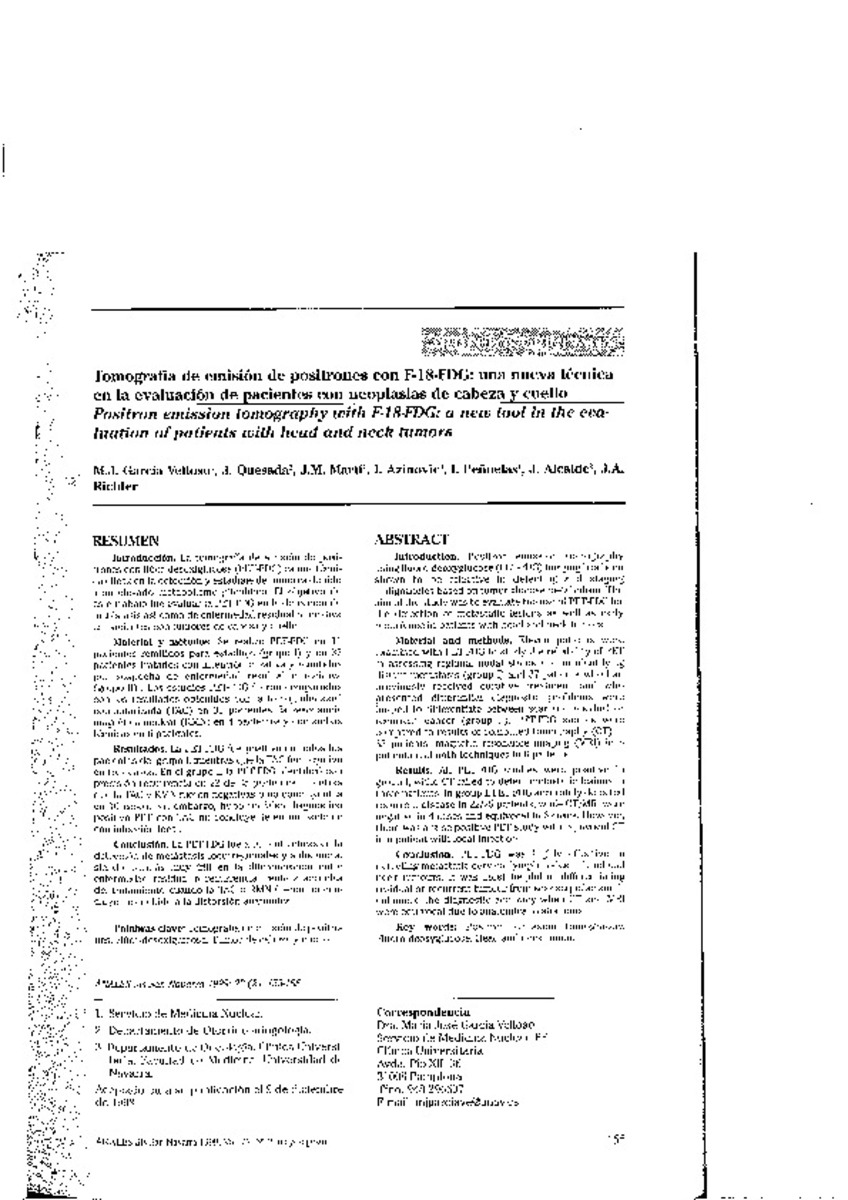Tomografía de emisión de positrones con F-18-FDG: una nueva técnica en la evaluación de pacientes con neoplasias de cabeza y cuello
Otros títulos :
Positron emission tomography with F-18-FDG: a new tool in the evaluation of patients with head and neck tumors
Palabras clave :
F-18-FDG
Positron emission tomography
Fecha de publicación :
1999
Editorial :
Gobierno de Navarra. Departamento de Salud
Cita:
Garcia Velloso MJ, Quesada J, Marti JM, Azinovic I, Peñuelas I, Alcalde J, et al. Tomografía de emisión de positrones con F-18-FDG: una nueva técnica en la evaluación de pacientes con neoplasias de cabeza y cuello. An Sist Sanit Navar 1999 May-Aug;22(2):155-165.
Aparece en las colecciones:
Estadísticas e impacto
0 citas en

0 citas en

Los ítems de Dadun están protegidos por copyright, con todos los derechos reservados, a menos que se indique lo contrario.










